As much as I love the NES and the SNES, I’m still always happy whenever a clearly Genesis-inspired game like Blink the Bulb shows up. With bright and colorful visuals, massive levels with branching paths, and plenty of abilities to choose between and combine, Blink the Bulb puts some of the best qualities of Genesis platformers in the spotlight.
The basic setup and progression in Blink the Bulb is standard yet solid. There are five holiday-themed worlds to choose from and each world is divided into two levels in addition to a final level which becomes available after finishing the other ten. Each world has unique enemies and stage elements, such as electrified walls and giant exploding gifts, and every level has a boss at the end. Every world is packed to the brim with character between enormous scrolling backgrounds and tons of objects scattered around the environments; there are a few background objects which blend in a bit too well with the play area, such as the stalactites in Terra Land, but for the most part these objects add aesthetic appeal without getting in the way. The Genesis influence shines through most strongly in the design philosophy of the levels themselves because every level is massive in scope and filled with twisting paths leading in every possible direction, making it impossible to see everything a level has to offer in a single run. This does mean that the individual moment to moment challenges presented by each level aren’t as elaborate and memorable as the challenges presented by more linear platformers, but the sense of exploration and discovery created by these interwoven paths balances things out.
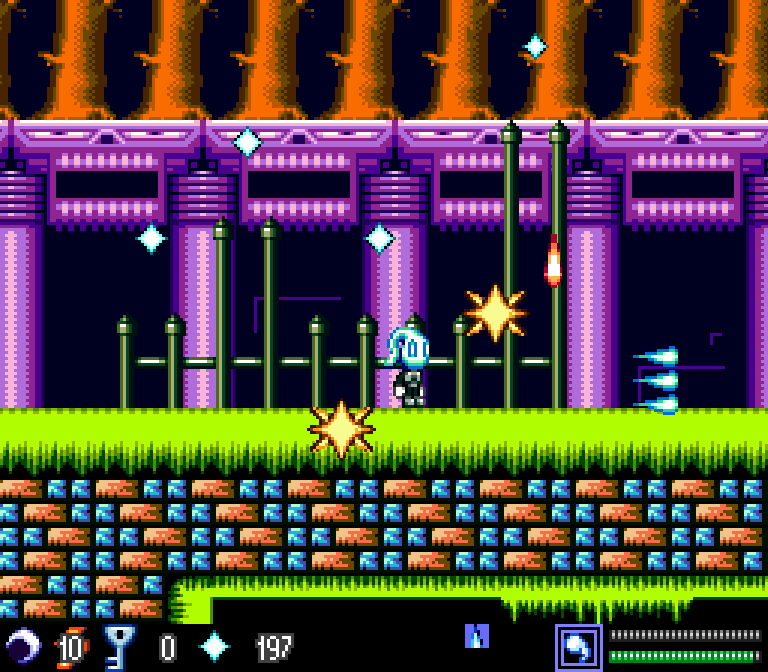
Blink, our lightbulb-headed protagonist, has a few more tricks than you might expect, though his initial abilities aren’t all that impressive. His main form of attack is to shoot a spark out in front of him, though both the damage and range of this attack is underwhelming if it isn’t charged up. Blink’s remaining capabilities consist of swimming, ducking, and double jumping and he creates a downward close-range attack at the start of his second jump. Blink gains his game-changing abilities from chests scattered around every level. You can find and consume keys to unlock these chests for free, but you otherwise must spend sparks (the equivalent of Mario’s coins) to open each chest. You can find either an active or a passive item in each chest and you can tell in advance which of the two types is inside a chest, though you won’t know the exact identity of an item without opening the chest.
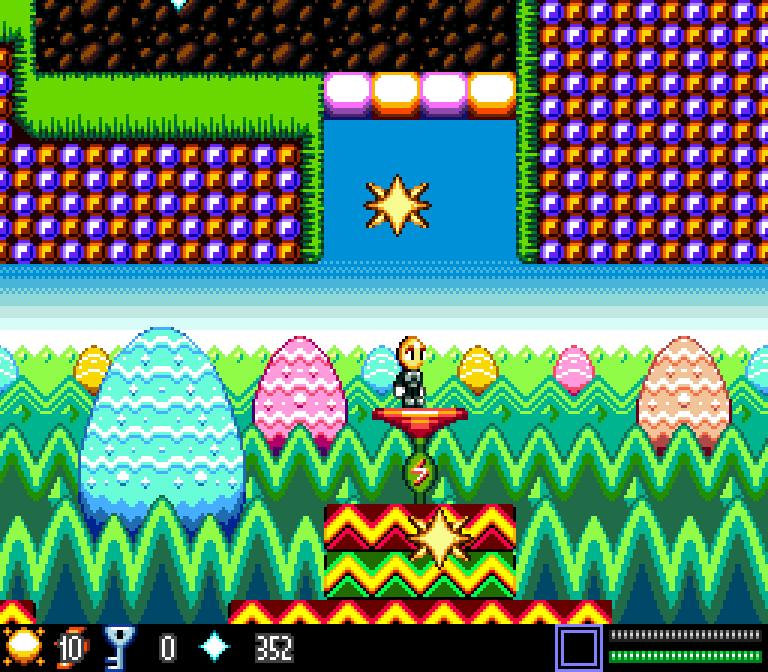
Some passive items grant small, stacking boosts, such as a reduction in a specific type of damage or a chance at dealing double damage, but many passives automatically create a new type of attack when certain conditions are met, such as summoning zombies by ducking or generating a damage shield when charging. Passive items which create attack skills also have long cooldowns, usually within the 15-20 second range, but these abilities often make fights significantly easier by providing you with new ways to attack. Meanwhile, most of the active items you’ll run across are batteries which heal varying amount of health, but every now and then you’ll run across a new head for Blink. These new heads have a 40% chance to be lost every time Blink takes damage, but they each provide a powerful skill which can be activated at the cost of a portion of a recharging energy bar. The actual nature of these skills varies wildly and I doubt I’ve seen all of them, but the list includes a siren head which reduces the time it takes to charge your normal attack, a heart head which sends out a massive downward attack in midair and greatly slows your descent, and a wisp head which can rapidly shoot out energy lasers to name a few. Like with the branching paths themselves, the chests you’ll come across and open each playthrough are almost certainly going to vary to make for a difference experience each time.
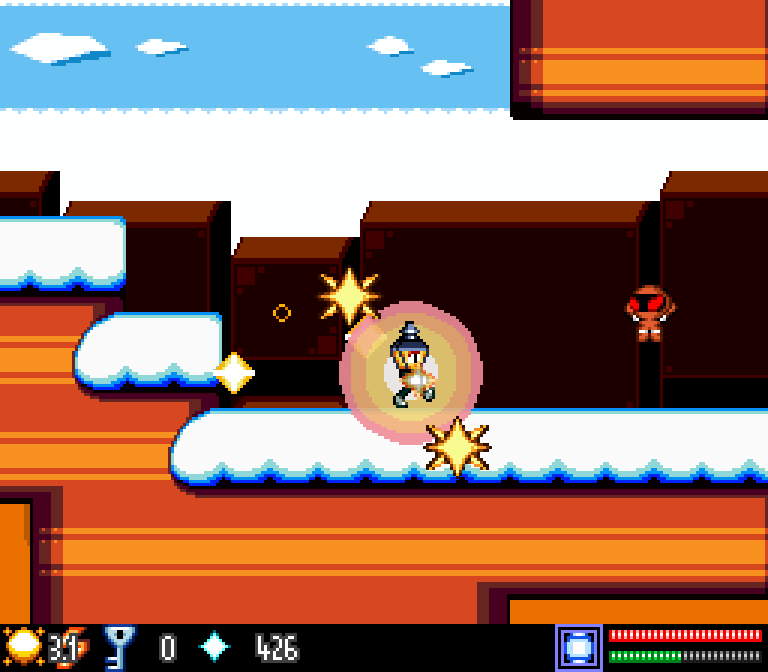
The most significant and impressive part of Blink the Bulb is the day/night cycle. You can set if the game starts during the day or at night in the Options menu and the game alternates between each of these times whenever you complete a level. The simplest part of this system is the existence of a potential new hazard or bonus in each level based on if you enter it during the day or at night. These hazards and bonuses include things such as a golden chest containing hundreds of sparks appearing somewhere in the level and sparks having a chance to turn into monsters when you try to collect them, though some of these modifiers fall more into a grey area, such as the item in each chest becoming randomized. Moving on to the significantly more impressive side of things, the boss of the first level of each world is entirely different depending on if you enter it during the day or at night. For example, you will fight a giant Christmas ornament which behaves a bit like a wrecking ball if you enter the first Winter Land level during the day, but if you go through this level at night the boss is instead an enormous hopping leg-shaped lamp (a reference to A Christmas Story which I definitely appreciated). I didn’t notice any differences in the attack patterns of the bosses found in each world’s second level, but these fights are still generally much more demanding than the other ones. However, what really makes this system shine is just how much everything in the levels themselves can change based on if it is night or day. Some enemies are sleeping or less aggressive during a certain time while others can change their attacks completely, such as in the case of giant hearts in Love Land which either split into two slow-moving homing heart bullets or four fast bullets aimed at Blink depending on the time of day. Objects and hazards found within the levels also vary between the two times and entire paths can be blocked off or altered; a seemingly harmless background object during the day in one playthrough may turn out to be a deadly obstacle when you enter the same stage at night on a second playthrough. The day/night cycle is a great and remarkably extensive mechanic which adds on yet another layer of replay value.
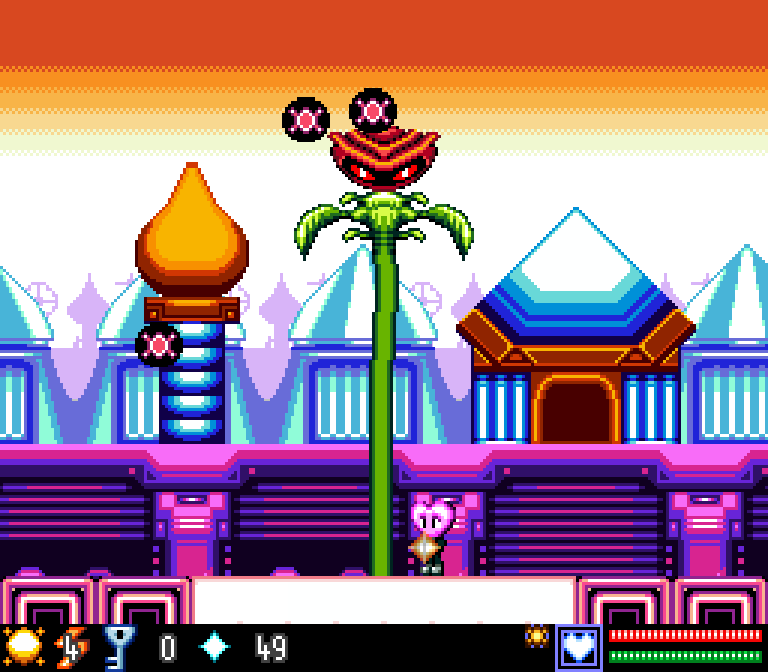
There are only two issues which I want to address. The first of these is what appears to be an oddly specific design oversight with the save system. You can choose to ‘Save and Exit’ after entering a level by jumping into a portal near the entrance and at checkpoints and the game automatically saves after you clear a level, so the save system is normally fine. However, if you start a new game, clear a level, and then exit back to the main menu without ever having chosen to ‘Save and Exit’ from within one of the levels the game never seems to make a save file and your data will be lost; choosing to exit a level even a single time will instantly fix this issue and have autosaves start to work as intended, but it’s a bug which can be a pain when encountered. My second issue has to do with the final level of the game, specifically the hazards encountered within it. Without giving away any specifics, I will say that there is nothing wrong with the hazards themselves, in fact they are fantastic and make for some of the best platforming in the entire game and that is sort of where the problem lies. The mechanics in this final level are extremely varied and great, but they each only show up for a very short time and are generally more interesting than the unique mechanics found in the previous stages. It would have been great to have encountered some of these hazards within the other levels because it is clear that a lot of work went into making them and the time you spend in your encounters with them is painfully short. It’s a bit odd to complain about a game saving the best for last, yet I can’t help but think that the initial ten levels would have benefitted greatly from the inclusion of some of the final level’s obstacles.
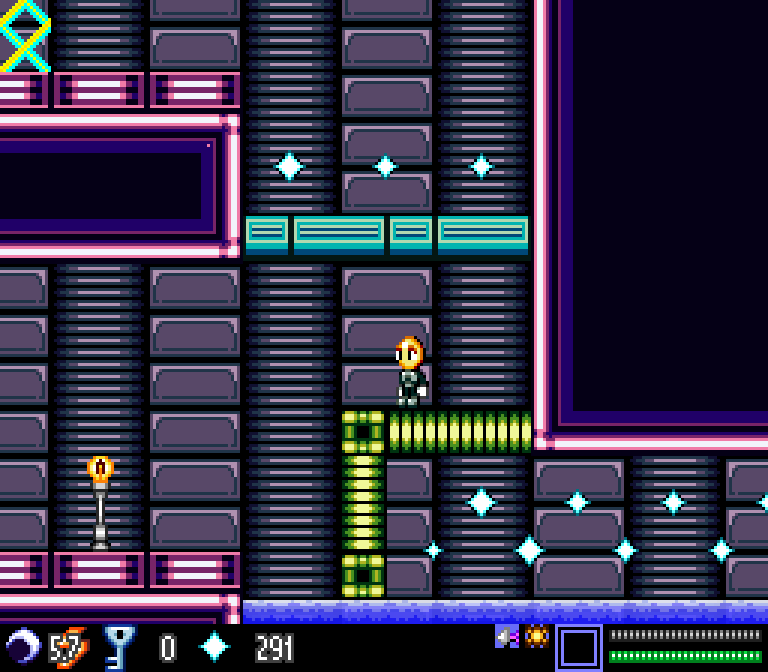
With solid platforming, a ridiculous amount of potential replay value, and a respectable number of weird and fun abilities, Blink the Bulb is definitely a platformer worth checking out and, as of the time at which I write this article, you can even help out the developer by upvoting this game on Steam Greenlight!